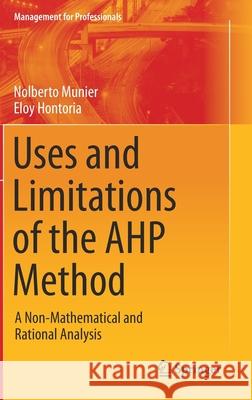Uses and Limitations of the Ahp Method: A Non-Mathematical and Rational Analysis » książka
topmenu
Uses and Limitations of the Ahp Method: A Non-Mathematical and Rational Analysis
ISBN-13: 9783030603915 / Angielski / Twarda / 2021 / 130 str.
Uses and Limitations of the Ahp Method: A Non-Mathematical and Rational Analysis
ISBN-13: 9783030603915 / Angielski / Twarda / 2021 / 130 str.
cena 322,01
(netto: 306,68 VAT: 5%)
Najniższa cena z 30 dni: 308,41
(netto: 306,68 VAT: 5%)
Najniższa cena z 30 dni: 308,41
Termin realizacji zamówienia:
ok. 22 dni roboczych
Bez gwarancji dostawy przed świętami
ok. 22 dni roboczych
Bez gwarancji dostawy przed świętami
Darmowa dostawa!
Kategorie:
Kategorie BISAC:
Wydawca:
Springer
Seria wydawnicza:
Język:
Angielski
ISBN-13:
9783030603915
Rok wydania:
2021
Wydanie:
2021
Numer serii:
000424298
Ilość stron:
130
Waga:
0.39 kg
Wymiary:
23.39 x 15.6 x 1.12
Oprawa:
Twarda
Wolumenów:
01
Dodatkowe informacje:
Glosariusz/słownik
Wydanie ilustrowane
Wydanie ilustrowane











